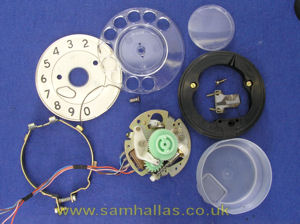

Sam Hallas' Website
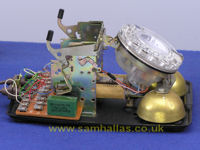
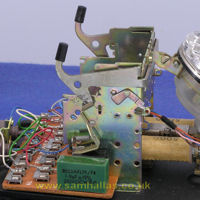
With the cover off more of the differences and similarities to Tele 706 are visible (Fig 9 left). The circuitry is contained on a smaller printed circuit board than that in the Tele 706. Unlike the 706 there was no discretely wired version of the 746. The bell gong and dial mounting bracket are unchanged, but the bell itself is now mounted directly on the base and not on the circuit board.
The cradle rest pips are very similar to the 706 model, but the support bracket is significantly larger. The switch hook is now a microswitch worked by a lever and restored by a small coil spring which also lifts the cradle rest pips (Fig 10 right). The microswitch is an improvement in reliability over the open springs used on the 706. However, the cradle rest tended to pop out of the microswitch lever if the telephone was dropped. A temporary kit, Kit 285a, was released as a fix, but a minor design change cured the problem later. The ability to latch the telephone on-hook with the lid off is provided by the small swinging lever visible in Fig 10.
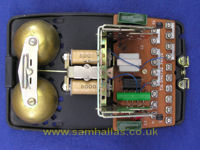
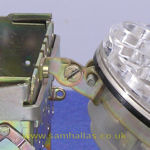
From the overhead view in Fig 11, left, you can see that the terminal strip is pretty much identical to the one in the 706. Now is a good time to disconnect the cords and dial before removing more of the components. The wire colours are marked on the diagram N846 to save you writing them down.
The dial can be released by loosening the 4BA screw shown in Fig 12, right. Taking the dial apart is shown in the second page of the 706 article. The parts of the Dial No 21FA from the Tele 746 can seen here in Fig 13, below.

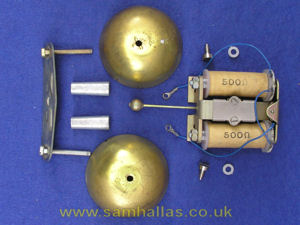
The bell gongs sit on tapered pillars and are held down by long 4BA screws into tapped holes in the base. The bell coils are held by a small steel bracket and are fixed from below by two semi-captive 4BA screws with nylon washers. These screws have plain unthreaded shanks allowing them to be screwed through the tapped hole in the case until they turn freely. Then the nylon washers can be put in place. To refit the bell hold the bell coils against the screws and tighten them fully. A cunning piece of design. Fig 13, left, shows all the separate components of the bell.
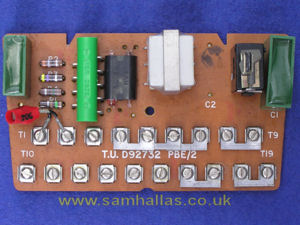
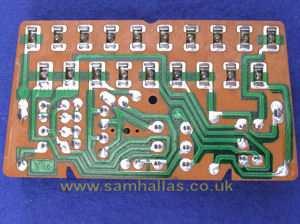
The circuit board is supported at the front where two V-shaped notches fit into slots in the main support bracket and at the rear by two plastic pillars. It is fixed by a single central 4BA screw.
Like the printed circuit in the 706, this circuit board has steel shell inserts with self-tapping screws. Improvements to note are:
Rectifier Element No 205 - the red item across the receiver terminals, T1 and T2 - is to prevent acoustic shock and was fitted as standard.
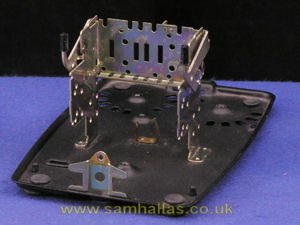
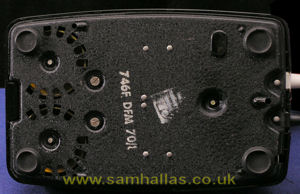
The base is a steel pressing in a black, crackle finish. The five holes for the bell gongs, bell coils and circuit board are tapped with a 4BA thread. The steel brackets are rivetted into place. They are: grommet clamp at the back; main support bracket; and support for the bell coils. There is an elongated hole with blind grommet and other holes to allow the 746 telephone to be used with a Planset N625. I understand that many Planphones used surplus stocks of refurbished 706 bodies so one with a 746 body is fairly rare. [Ref 2] An extra cable entry is provided, bottom right in Fig 18, for a watch receiver.
The feet are the same as those used on the 706. They can be pushed out, but are difficult to replace.
The ivory 746 in Figs 2 and 3 above has a plastic base like the wired version of Tele 706 - a variation introduced by Plessey, Beeston, later in the 1970s.
Next we'll look at some of the accessories used with Telephone No 746.
 Previous
Next
Previous
Next